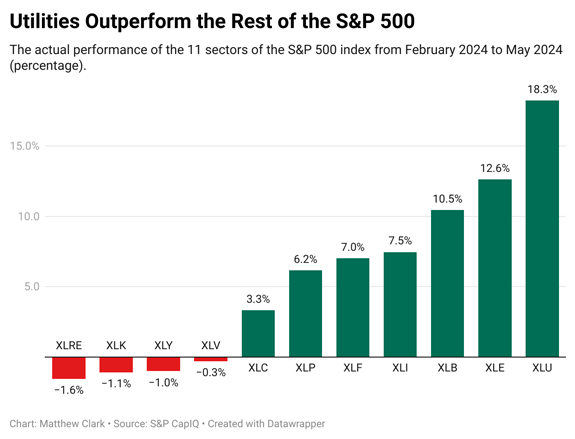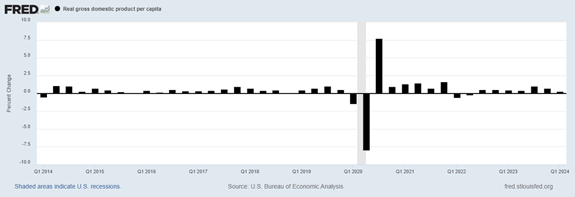I Haven't Seen This Sector's Bullish Trend
in 30 Years |
Money & Markets Daily,
When I looked at my charts over the weekend, I felt like Tom from the old cartoons.

I can’t recall seeing anything like what I recently spotted in more than 30 years of weekly scans:

Utility stocks, as represented by the Utilities Select Sector SPDR Fund (NYSE: XLU) in the chart above, were the best-performing sector over the past three months — a critical time frame because it marks the beginning of a trend.
Stocks that trend for at least three months are likely to continue trending for at least the next three months.
We don’t expect utilities to show up on momentum screens, but that’s what happened when I checked to spot any potential momentum breakouts.
Although I was surprised to see strength in the sector, I immediately knew I needed to pull up one particular stock on screen because my colleague Adam O’Dell had already done the research.
Adam’s latest findings reveal the new potential of utilities. He’s applied third-order thinking to investing in artificial intelligence (AI).
And it’s led him to uncover a powerful investing opportunity…
Next Level AI Investing
You may be wondering what third-order thinking means and why it matters to us as investors. To understand that, let’s first review the two levels below the third.
First-order thinking is straightforward. You review the stocks closely identified with the sector. Although market leaders like OpenAI and Anthropic are private, some publicly traded companies, including Microsoft Corp. (Nasdaq: MSFT) and Google's parent Alphabet Inc. (Nasdaq: GOOGL), are big players in AI.
Second-order thinking turns to the companies behind the first-order market leaders. Some of these stocks are prominent AI trades as we've seen with Nvidia Corp's (Nasdaq: NVDA) 210% gain over the last year.
Third-order thinking goes to the next level and examines what Nvidia and other chipmakers require to deliver those valuable chips.
Adam considered this issue carefully and realized that electricity is a potentially limiting factor in the AI supply chain.
Every step of the process requires electricity. Of course, chips are essential. But you can’t design or make chips without electricity. They don’t run without electricity, and users can’t get value without using devices powered by electricity.
This demand will require a change in how we think about power.
Weather and a changing climate tend to drive a surge in electricity demand. But now, workers not confined by 9-to-5 schedules will drive another surge.
In the new economy, workers and the complex AI programs they use every day will demand computing power 24/7.
For example, when I’m researching trading strategies, I set up my analysis to run overnight so that I have the results when I start work in the morning. And I'm just one of thousands (if not millions) running these numbers.
As software becomes more advanced, I’ll add more computers to my workspace, some of which will analyze output while I’m trading.
It adds up quickly!
This expansion of tech infrastructure is good for the economy … as long as we can get enough electricity to meet the increasing demand.
That will be a challenge. However, Adam has found one company that could be among the most significant stocks of our time working to solve this problem.
You can see the details of his discovery — and your potential for massive returns — right here.
Until next time,

Michael Carr
Editor, Money & Markets Daily
 | He’s already made gains of 200,000% … 499,000% … and even
3,250,000% on tech startups over the last two decades.
Now, he’s invested in a stock few people have heard of, which is trading for just $25 a share.
See how you can invest alongside him (but you’ll want to do it between now and August 5th.) |

President Biden Should Be Watching This Chart
Despite protests from the White House, many voters believe the economy isn't doing well. And that’s probably because it isn’t. The chart below shows inflation-adjusted GDP per capita. Over time, GDP should rise as the population grows.
This chart adjusts for that factor along with inflation. It shows growth of 0.3% in the first quarter of 2024. Over the long run, real GDP per capita growth averaged 0.49%.
In election years — when growth was below average in the second quarter — the White House changed parties every time since 1948 with just two exceptions. Both Eisenhower and Obama were reelected despite slow growth. However, inflation was less than 2% in 1956 and 2012.
Biden doesn't have low inflation, so he needs strong growth this quarter. Otherwise, he might get to spend even more at his Delaware mansion.
— Mike Carr, Chief Market Technician, Money & Markets
Real GDP Per Capita

(Click here to view larger image.)
Check Out More From Money & Markets Daily:

Post a Comment
Post a Comment